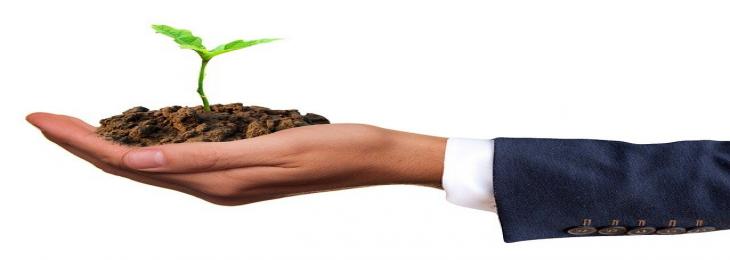
Living a Green and Sustainable Life
“Living a green and sustainable life means creating an ecosystem that works with Nature, instead of confronting it, and that does not cause long-term or irreparable damage to any part of the environmental web” - LAYMEN
Living a green or committed life refers to the ever-increasing process of using natural resources in an efficient way that promotes sustainability and facilitates the effort to build a better world for our future generations. ‘Green living’ means that we make our own decisions about our health and engage in practices that reduce the negative impact on our society and also improve the life of the planet and the creatures. Green life is very important in our daily lives. Green life involves a lifestyle that creates a healthy involvement in home and on the planet. Some of the major factors which contribute to green health are generating as little waste as possible and reducing overuse of water. Going green have some effects on the society. It helps the environment by reducing the amount of pollutants that enter the soil, water and air.
Individual Actions to Protect the Environment
Nowadays, we can probably see that the green is everywhere - in the news, politics, fashion, and technology. The concern and discourse around this topic is much needed, however with a million messages and ideas coming to us from all sides, it can be easy to get caught up in the multitude of suggestions coming our way such as - throwing away plastic bags, lowering the thermostat, and recycling. What’s worse is that one may suffer from green “fatigue” - that is, delaying green messages because of its abundance.
As globalization makes the world smaller, it becomes easier to see how human lives (plants, animals and ecosystems) are harmonized everywhere. So objects manufactured using cheap raw material could affect the quality of life, pesticides used could affect the health of humans and animals alike, and greenhouse gas emissions from all over the globe could affect the ecosystem of the rain forest in Brazil.
The fact is that everything we do has an impact on the world – be it positive or negative. The good news is that we have the power to control most of our actions and, this includes the impact of our actions on the environment. These actions could range from where we live, what we buy, eat, and use to light the home- can have a global impact. For example, 25 percent of western medicinal plants are derived from flowers from the Amazon rain forest? And less than one percent of these tropical trees and plants have been studied by scientists? These figures suggest that we all have a large (and growing) personal contribution to the health and well-being of the world that we live in. In addition to protecting biodiversity (and stimulants), forests are also a good source of carbon. The bottom line is that benefits everyone on earth to help keep our wildlife alive and growing. But adopting a green lifestyle is not just about helping to keep the rainforests intact, but to also improve the way of living.
There are some simple tips for living a healthier life. They are as follows:
• Reduce chemical waste
• Using recyclable plates and utensils
• Avoiding waste water bottles
• Reducing the use of paper
• Buying only the things we need
Going green saves us from various toxic products and environmental pollution. This will help us to live a healthier life that will help us to be motivated and increase our productivity at home and at work. The critical step of waste prevention has been overshadowed by a focus on recycling. We should help promote a greater understanding of the importance of a green lifestyle to help us live a better and more peaceful life.
Today more and more companies are developing products that help us live a healthier life. These include daily necessities such as electric cars, lights, bulbs etc. is created with consideration for environmental protection. These products help us save water, energy and precious natural resources. There are a few steps that everyone should take to live a green and healthier life.
• Go Digital and use less paper
• Turning off lights and fans when not in use is one of the easiest ways to reduce energy consumption
• We must start reusing before recycling.
• The most important thing to follow is to save as much water as possible
• Planting more trees to make the environment greener instead of cutting them down
• Reducing pollution
• Using a proper disposal site
We must begin to embrace a green lifestyle as soon as possible because it provides better health, and helps to reduce pollution, and thereby reduce health problems.
Today more and more companies are developing products that help us reduce pollution and create a healthier lifestyle. There are many health problems such as pneumonia and respiratory disorders which can be avoided by leading a green life. If we start living green we are more likely to reduce the risk of these diseases. We can also choose foods that can help us stay healthy.
Practical Green Lifestyle Practices
Making a change towards an environment that protects the environment can help improve your healthy-life for the rest of your life, and it is also a great encouragement to the world around you. Exposure to unfriendly Earth's habits, unhealthy foods, unwanted chemicals, and bad habits can all add to your overall health, while enhancing the environment and the environment. Wherever we are in the world, here are some tips that follow all the efforts that are accessible. Some of it is very interesting! So enjoy yourself while we all fight for a green future.
1. Saving Power
The most direct step anyone can take to reduce the impact their lifestyle has on the environment is to reduce the amount of energy you use in their home. Along with keeping your home green, energy saving has real, tangible benefits to your life because it can save you money.
2. Water saving
Saving water around the home is the way to reduce the environmental impact of your lifestyle & chains.
3. Reduce Fuel
Whenever it is possible, try to avoid driving. Local trips can be done on foot or by bicycle, and always try to look for public transportation as you go.
4. Sharing Car Ride
If you have to drive, do some research on driving opportunities with friends and neighbors, participate in business and leisure activities, and reduce traffic congestion or if possible, try to make shorter journeys by bicycle (making sure you learn how to keep it safe first).
5. Go to Biological Ingredients
The food, which we eat has a huge impact on the world's environment - as the world's population grows, habitats increases and the demand for food increases. The extrusion surrounding food supply, production and consumption is hugely complex, but there are other considerations that can help reduce the impact of your diet on the environment while contributing to a healthier lifestyle.
6. Avoiding Bottled Water
Bottled water is expensive, inefficient, and produces large quantities of plastic waste. Try to avoid bottled water, instead we can reuse the bottle filled with tap water; if you like you can use a water filter to clean tap water and cool the water in the fridge.
7. Plastic Trench
Plastic bags are the most serious threat to the environment. It is estimated that 100 billion plastic bags are used in the United States each year, with only 1-3% of recycled plastic bags. This means a lot of garbage, most of which is stored in the wild.
8. Saving the Bees!
There are many natural programs you can take, but most importantly the need to conserve our bees. These tiny creatures are essential for pollinating the earth's natural environment, but they are dying from the use of pesticides.
9. Try to use Freecycle
Freecycle, which is an online and social service that can allow users to discover and share reusable items. Before you buy, check with your local Freecycle to see if you can get the item for free, and if you have any unwanted items in your home, use the app to use them again. It's easy to use and helps the wider environment and your community.
10. Eco-friendly gifts
When giving a gift, think of something else, such as making a gift for yourself, or giving of your time and abilities to show kindness to a friend or a loved one. You can also use companies that do not harm the environment, such as the Eden Project. Whatever country you are in will have the right resources, immediately look for a unique gift.
11. Grow Food in own Garden / kitchen
Growing food gives your insight into food production, connects you to nature and saves money. So there is the problem of not having time or space in the garden to plant and take care of the whole vegetable garden, so go for something as simple as pot herbs or a sack of potatoes, which can grow a window successfully.
12. Modern Cleaning Products!
Modern house cleaning products are expensive, and often harmful to the environment, so some good green things you can do. Safe and environmentally friendly substitutes use ingredients such as baking soda, soap, lemon, corn and vinegar. It’s quick to find recipes online; try Earth Easy for help.
13. Choose Plant Cleaning Products
If you do not have time to make cleaning products, you can instead switch to conservation options. Types such as Recover are made of natural, plant-based, durable materials that do not leave chemical residues behind, and are perishable. It is very helpful for your diet and for local wildlife.
14. Go to Paper-less
If you want to continue you can choose not to have paperwork! You can get all your bills and letters from banks, energy companies, and other email providers
15. Celebrate the green path
Major celebrations in our lives are often associated with glamor and use. You can keep this as it should, but you can be green while having fun. Holidays can be stressful for tourists, can harm the environment, pollution and economic instability. When planning a holiday you should consider other options, or consider “staying” by enjoying the local holiday, thus minimizing the environmental impact of the holiday, and gaining / engaging with your local community, environment and economy. Green Loons is a great place to start; they offer some amazing places with something green that sounds great.
Conclusion
As other causes of death become more prevalent, the benefits of green varieties become apparent. People residing closer to green spaces had a lower rate of cancer death, lower risk of dying from respiratory-related disease, and a lower risk of death from kidney disease. It would be absurd to imagine that humans would have the same benefits. Living close to green spaces was associated with lower levels of stress, increased social participation, higher levels of activity, and less exposure to air pollution. Improved conditions can also reduce the stress levels associated with noise and the functioning of city life, leading to a relaxed, slow-moving life. People living in green areas tend to have higher levels of engagement among their peers and get more outdoor activities, leading to higher levels of vitamin D - a health-related vitamin. In terms of pollutants, flowers and leaves are a natural air filter, which greatly improves the air quality in the environment.
Therefore, it is important to adopt a healthy lifestyle and it helps us to stay healthy and healthy.






